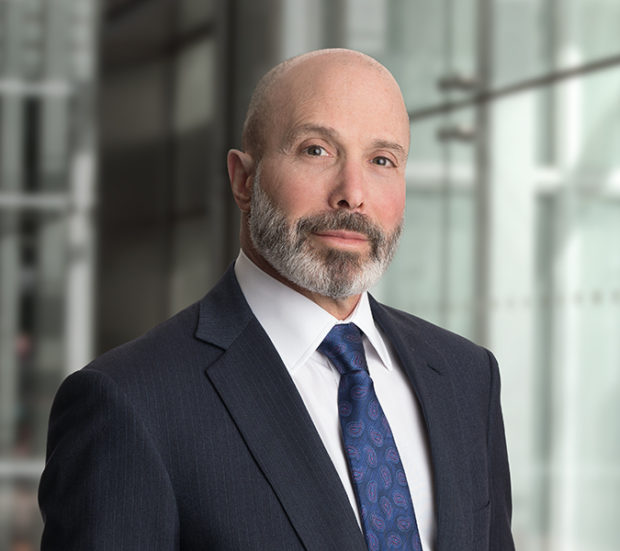Revealing that Chubb has its own version of ChatGPT and an app store that delivers copilots to different functions of the company, CEO Evan Greenberg said he recognizes the power of AI—but he’s “not breathless about it.”
The chief executive addressed an audience of financial officers and analysts at the S&P Global Ratings Annual Insurance Conference in early June, responding to questions from S&P Managing Director Larry Wilkinson about topics ranging from AI to economic trends to China-U.S. relations to social inflation. (Related article: Social Inflation Fix: Insurers Can’t Be Out Front, Chubb’s Greenberg Says“)
“That is incrementally a really great hat trick,” said Greenberg, referring to the Chubb GPT-app store-copilot combination. He went on to reference developments of other generative AI tools taking place at Chubb beyond the hat trick, including the existence of a copilot that “increases bandwidth of programmers” and the work of “downloading [our] own large language models.”
“We’re a practitioner of that. We’re doing that right now,” said Greenberg, noting the insight and the power that can come with an LLM built on Chubb data. “But that I’m not breathless about. That will evolve over the next number of years. That will be iterative. That won’t be this instant game-changer for the industry [that] I hear some people naively talk about.”
(At a separate session, Gen Re’s chief technology officer, Frank Schmid, and Adrian Jones, chief of staff for International & Global Markets at Acrisure, discussed the idea of breaking apart the data and conversational engines of LLMs, like ChatGPT, noting that the body of knowledge fueling those models—the Internet—doesn’t necessarily serve the needs of insurers and other businesses.)
AI “will be an important tool, and it will come over the years in the future,” he said, responding to a question from Wilkinson about how AI will change the insurance industry activities related to customer experience and risk modeling.
Before focusing specifically on the promise of generative AI and LLMs, Greenberg spoke broadly about AI-related activities insurers are working through already—building the data fuel for AI engines, testing the limits of “algorithmic AI,” (which speakers at a later session referred to as “predictive AI”), and decreasing cycle times of technology.
“On one hand, [AI] is such a powerful tool and it has so much promise. On the other hand, it’s very hard work and you shouldn’t be breathless about it. It’s iterative in how it evolves and how you use it,” Greenberg began.
“We are data companies. Some are good, some are lousy. But it is who we are, and the tools that are revolving around our ability to be insightful with data [are] stunning.”
“The fuel of AI is data. Those who have data have an advantage,” he continued, noting that no insurer has any advantage over another in acquiring external data. “We can all get third-party external data,” he said, noting that the differences between insurers relate to how they implement tools and bring in talent to operationalize data. “Everybody can talk about it and use it, but it’s [necessary] to enrich the data you have and [build] insights around that,” he continued. “AI needs that fuel, and you have to feed it.”
Greenberg said “what’s evolving right now” is a process of insurers tapping into the power of algorithmic AI. “We’ve yet to test the limits of that,” he said, referring to use cases such as improving customer experience, expanding straight-through processing to more complex insurance lines, adjudication and servicing of claims, identification of fraud within claims, and processing renewals and endorsements.
Focusing on the speed of change that AI brings—”alongside human beings”—within a business, Greenberg said cycle times of change are currently very long for insurers—typically two or three years. “In my company, our cycle time of change is roughly a year, and we’re trying to lower that now to weeks. We have areas that are down to months,” he said.
“It’s AI and the tools of that, and other technologies and the insights, and how you organize and the skill sets you use” that are important contributors to lower cycle times of change, he suggested.
“It’s no longer underwriting. It’s underwriting and engineering, and how you put all that together with AI.”
Said Greenberg: “The fact is the world is getting faster…And if the insurance industry is going to remain vital—and I think it will— it has to operate at that speed. Otherwise you’re out of context. You’re a buggy wagon when they invented the automobile,” he said. “That’s what the whole world is transitioning through to right now,” Greenberg said, before going on to discuss the promise of newer AI—generative AI and LLMs.
Ch-ch-ch-changes
Greenberg first introduced the idea that insurers are data companies which fuel AI during the opening minutes of his talk with Wilkinson, who asked the CEO what has changed—and what has remained the same—in the insurance industry over the last four decades, a time frame chosen because the conference was the 40th one hosted by the rating agency.
Data and technology were the first two words Greenberg spoke to put into the “what has changed” category.
“The ability to be insightful about risk, particularly pricing and selection of risk, has dramatically changed—[and] continues to evolve,” he said.
Looking ahead, he said, “You can’t be more optimistic. We are data companies. Some are good, some are lousy. But it is who we are, and the tools that are revolving around our ability to be insightful with data [are] stunning,” he said, predicting the emergence of AI will improve that ability further.
“Underwriting is both an art and a science. Technology isn’t going to tell you about risk selection totally. It can tell you about portfolio management and pricing. Risk selection [is] different.”
That said, Greenberg later stressed that AI won’t replace humans in selecting risks when discussing the “what hasn’t changed” category. “The intrinsic nature of the business doesn’t change…Underwriting is both an art and a science. Technology isn’t going to tell you about risk selection totally. It can tell you about portfolio management and pricing. Risk selection [is] different.
“AI holds a promise to improve and prove the science around risk selection,” he said.
Tacking onto the “what has changed” category, Greenberg discussed the efficiencies that technology has brought to the industry. “It’s improved the speed and the cost dramatically,” he said, recalling that when he started in the insurance business, “we literally had piles of paper and people would get their policies sometimes a year late. Sometimes we’d go through the renewal and then we issued the policy for the year before,” he said. “It was literally that way in certain lines of business…That has changed dramatically.”
The governance process of insurance has also changed, Greenberg said. “Think Enron. Think the responsibility of rating agencies and [actuaries and] auditing firms,” he said, noting that the governance process has improved, with some changes imposed by regulators.
Other unchanging facets of the business Greenberg pointed to included the need to price products before you know the true cost—something that becomes more evident in short-tail lines than long-tail lines.
“And human nature doesn’t change,” he said. “We’re in a risk business, but the juices that flow with so many to chase market share in a short-term view at the expense of pricing risk adequately and selecting risk properly, that nature—human nature does not change,” he said.





















 New York Times Sues Perplexity AI for ‘Illegal’ Copying of Content
New York Times Sues Perplexity AI for ‘Illegal’ Copying of Content  Rebuilding Negotiation Talent: Why This Skill Is Missing and How to Fix It
Rebuilding Negotiation Talent: Why This Skill Is Missing and How to Fix It  AI in Property/Casualty Insurance: Why Trusted Data Is the Missing Link
AI in Property/Casualty Insurance: Why Trusted Data Is the Missing Link  Berkshire Hathaway Announces Leadership Appointments: New CEO at GEICO
Berkshire Hathaway Announces Leadership Appointments: New CEO at GEICO 
